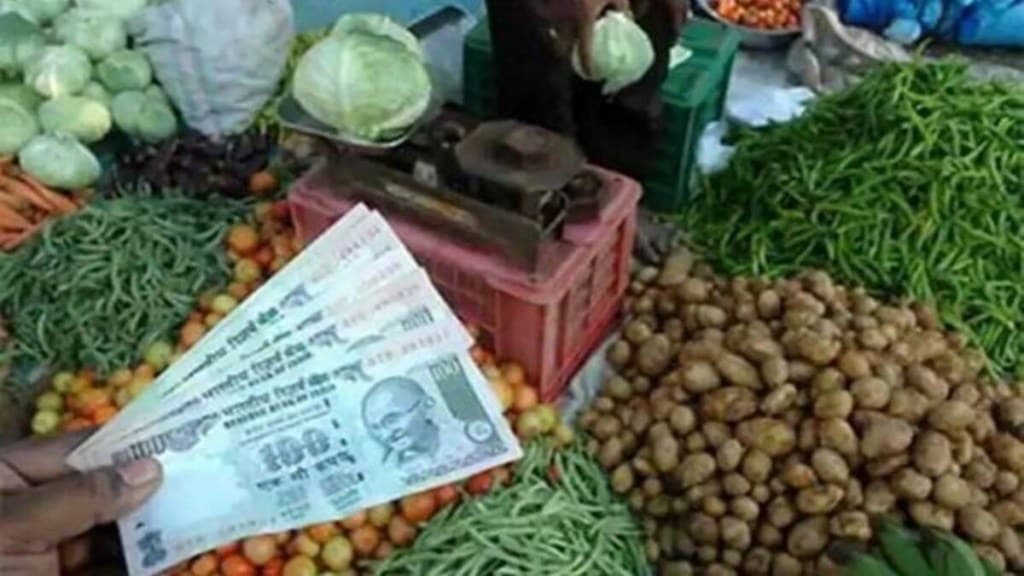Retail inflation, measured by the Consumer Price Index (CPI), fell to a 15-month low in March and below the 6% upper tolerance limit of the RBI after remaining above it for two months, as prices of most items, particularly in the food basket, moderated and a base effect came into play.Official data released on Wednesday revealed that retail inflation was at 5.66% in March 2023 against 6.95% a year ago.
It was at 6.44% in February 2023. Inflation was lower than the March 2023 level in November 2021, at 5.54%, and but has since been higher than the latest number. CPI inflation remained elevated for much of last fiscal year but it was expected to start cooling from March. The pace of decline has been faster than anticipated and analysts expect it to ease further in the coming months.The Reserve Bank of India, which chose to maintain the status quo on rates in the monetary policy last week as against the market expectation of another 25-basis point hike, also expects retail inflation to cool this fiscal. It has forecast headline inflation at 5.2% for 2023-24 with first quarter inflation projected at 5.1%.“Unless the feared heatwave leads to a rapid rise in prices of perishables, inflation may report a substantial base-effect led drop to around 5%-5.2% in the next two prints, which will reinforce the MPC’s decision to pause in April 2023,” said Aditi Nayar, chief economist and head, research and outreach, Icra.
March CPI data revealed that both core and food inflation have eased to less than 6%. Inflation remained elevated but moderated across all categories, except housing which registered a minor uptick. However, analysts remain concerned that unfavourable weather conditions including the unseasonal rains and expected heatwave could push up food prices again.It may be noted that despite the latest moderation, retail inflation continues to be above the RBI’s medium-term target of 4% for 42 consecutive months.“Factors like better rabi output and easing cost conditions would be countered by weather-related vagaries, milkflation, higher global financial market volatility and ongoing pass through of input prices to output prices, impacting core services inflation,” said Madhavi Arora, lead economist, Emkay Global Financial Services.
Inflation in food and beverages eased to 5.11% in March from 6.19% in February helped by deflation in vegetables (8.11%), meat and fish (1.42%) and oils and fats (7.86%). But, inflation in cereals and milk remained stubbornly high at 15.27% and 9.31% in March. Fruits and spices, too, witnessed high increase of 7.6% and 18.2%, respectively.Madan Sabnavis, chief economist, Bank of Baroda, noted that there have been two countervailing forces in the food and beverages category. “Inflation for cereals (mainly wheat) and milk have pushed inflation upwards while negative growth in case of vegetables and edible oils has brought it down,” he said, adding that this trend will continue in the coming months as there are expectations of wheat prices increasing in case there is shortfall in production this season.
India Ratings economists Sunil Sinha and Paras Jasrai said that inflation number for March reveals a reversal of increasing trend of nine months of rising cereals and products inflation. “It appears that the government interventions have helped in arresting increasing inflation of cereals and products,” they said, adding that the progress of 2023 monsoon will have some impact on 2023 cereals and products inflation.The MPC, which is scheduled to hold its next meeting between June 6-8, will also depend on the monsoon trajectory to decide on policy rates. IMD has forecast a normal monsoon for this year at 96% of the long period average while private agency Skymet has forecast it to be below normal at 94% of the LPA.“We maintain our average CPI inflation forecast for FY24 at 5.1% with Q1 print at 4.8%. With CPI inflation expected to moderate in the coming months and an improvement in the household’s inflationary expectation, we do not expect further rate hikes by RBI in FY24,” said Rajani Sinha, chief economist, CareEdge.
Core inflation in March eased to 5.8% from 6.1% in February. CPI inflation in five of the baskets including clothing and footwear (8.18%), pan, tobacco and intoxicants (2.99%), fuel and light (8.91%) and miscellaneous (5.77%) dipped marginally in March from February.As many as 9 of the 22 states had CPI inflation of above 6% with the highest being in Telangana again at 7.6% and lowest in Himachal at 4%. Significantly, reversing the trend of previous months, rural inflation at 5.51% in March, was lower than the headline number as well as urban inflation at 5.89%.

